|
 Secure Site
Secure Site
|
 |
Archive for November, 2012
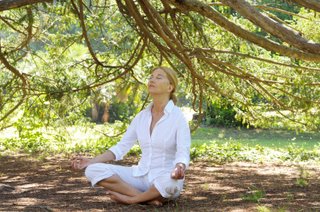 meditation for relaxation It’s no surprise that being consumed with anger can bring on a headache. But worse than expressing your ire is not expressing it. According to researchers at the St. Louis University School of Medicine, bottling up rage may play a bigger role in head pain than anyone ever imagined. Psychologist Robert Nicholson asked 422 people various questions meant to uncover their headache triggers, and the answers pointed to one thing: “Holding in anger was the most important emotional factor in whether or not they were going to experience headaches,” says Nicholson. Why does allowing your frustration to fester bring on the pain? “I wish I had a good answer,” Nicholson says. “We’re getting research underway to figure out the physiology behind it. Muscle tension probably plays a role, but some people think there’s also some interaction of the emotional component of the brain with pain receptors.” Whatever those pathways turn out to be, the answer isn’t just to let anger fly but to figure out ways to keep it from eating away at you. Experts advise learning relaxation techniques, such as deep breathing, yoga, meditation, or biofeedback. You might also want to see a therapist who can help you learn healthy ways to express your anger. Your head—and your friends—will thank you.
adapted from Natural Solutions, October 2003
Although meditation can be done in almost any context, practitioners usually employ a quiet, tranquil space, a meditation cushion or bench, and some kind of timing device to time the meditation session. Ideally, the more these accoutrements can be integrated the better. Thus, it is conducive to a satisfying meditation practice to have a timer or clock that is tranquil and beautiful. Using a kitchen timer or beeper watch is less than ideal.
And it was with these considerations in mind that we designed our digital Zen Alarm Clock and practice timer. This unique “Zen Clock” features a long-resonating acoustic chime that brings the meditation session to a gradual close, preserving the environment of stillness while also acting as an effective time signal.
 Meditation Timers with Chime, a natural acoustic sound not electronic Now & Zen – The Zen Meditation Timer Store
1638 Pearl Street
Boulder, CO 80302
(800) 779-6383
Posted in Chime Alarm Clocks
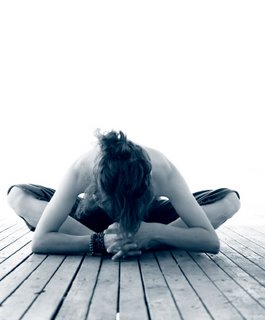 yoga Yoga can be a powerful healing tool for overcoming back pain. But there are times when your practice can do more harm than good. “Too often, students don’t back off a pose until there’s pain,” says Jamie Elmer, a yoga instructor in Boulder, Colorado. “Hurting even just alittle bit is a sign that you have to change something.” Elmer challenges students to answer this question: Why are you coming to yoga? “Are you coming for a distraction from something else? That’s what TV is for. A yoga practice without mindfulness can lead to injury quickly.”
If you have a history of lower back pain, keep these do’s and don’ts in mind when you practice, says Elmer:
DO vary the intensity of your practice. “If we do anything repetitively, day after day, and we haven’t built up the internal strength for that activity, the body won’t be ready for it, and injury will result,” says Elmer. Like any type of exercise, mix up the style of yoga you practice. If you do a vigorous, Ashtanga class one day, seek out a more meditative and calming class the next, so you’re not repeating strenuous movements too often.
DON’T go into any pose to your fullest range of motion. “When you’re in that kind of extreme, you’re not using muscle control,” she says. The result? Risky joint compression in your hips, knees, and spine.
DO use your abdominal muscles and bend your knees when going into a forward bend to prevent overstretching in your lower back.
DO use your abs and keep your legs strong in back-bending poses, including cobra and upward-facing dog.
DON’T twist with a rounded spine. “More important than how deeply you can twist is how long your spine is when you do,” says Elmer.
adapted from Natural Solutions, October 2009
Use our unique “Zen Clock” which functions as a Yoga Timer. It features a long-resonating acoustic chime that brings your meditation or yoga session to a gradual close, preserving the environment of stillness while also acting as an effective time signal. Our Yoga Timer & Clock can be programmed to chime at the end of the meditation or yoga session or periodically throughout the session as a kind of sonic yantra. The beauty and functionality of the Zen Clock/Timer makes it a meditation tool that can actually help you “make time” for meditation in your life. Bring yourself back to balance.
 Yoga Timers with gentle chimes Now & Zen – The Zen Timer and Alarm Clock Store
1638 Pearl Street
Boulder, CO 80302
(800) 779-6383
Posted in yoga, Yoga Timer, Yoga Timers by Now & Zen
 Warm winter sun “Imagine yourself outside on a beautiful Saturday afternoon, just in the flow, enjoying life. Suddenly the sun disappears behind a cloud that you didn’t know was there. It’s dark now, and you feel off kilter, sad.”
That’s how LeNeva Spires, who works as an executive assistant at a university in Portland, Oregon, describes the seasonal affective disorder (SAD) that affects her every autumn.
Though classified as a type of depression, “it feels more like something is missing, like things are not quite right,” says Spires.
It’s precisely brightness (or rather, the lack of it) that triggers this mood disorder, one of few health problems tied to a season. SAD primarily affects people who live in northern latitudes (above San Francisco and Washington, D.C.), and more women than men. It often begins in September or October, as the days shorten, and lingers until spring.
SAD tends to respond readily to the very thing we’re missing in the winter months: light. Learn how to get more of it as well as discover the best foods, exercise, supplements, and herbs to create your action plan for a brighter, happier winter.
1. Let There Be Light
For seasonal depression and the winter blahs, “the treatment of choice is light,” says psychiatrist Alfred Lewy. How do you get that light? You could move closer to the equator, where the sun rises and sets at a more consistent time all year long. Or, if your family and work life allow it, you could change your sleep schedule during the winter so you wake up a half-hour after sunrise (check your local paper to find out when the sun rises), and then go immediately outside.
But for most of us, the easiest option is to purchase a light box outfitted with special bulbs that mimic the brightness of the morning sun. Light therapy works by getting our sleep-wake cycle to synchronize with an electric-powered “sun,” thereby resetting our circadian clock. We tend to feel our best when we wake with the dawn, and the light box essentially helps you make your own dawn.
Light-Box Lowdown
Available online and at specialty stores (starting at about $160), light boxes are safe to use at home, whether or not you have an official diagnosis of SAD. Lewy recommends placing the light box at a 45-degree angle to you, from either the side or above, and starting with a morning dose of light: about 30 minutes, taken between 6 a.m. and 8 a.m. Some people may need more time — 45 minutes, or even up to two hours — but once they feel an improvement in their mood, they can reduce the sessions to 30 minutes.
The light receptors that help rest our circadian clocks reside in our eyes, so keep your eyes open during light treatment. In fact, Lewy suggests glancing sideways at the lightbulbs once or twice every minute (something you should never do with the real sun).
A small number of SAD sufferers respond best to early-evening light treatments. After a week or two of morning treatment, if you notice no improvement even with two-hour doses, try the evening sessions instead, suggests Lewy. People usually begin to feel better within a few days but should keep up the treatments daily, ideally from the onset of symptoms (usually in September or October) through at least March.
 bring on the night 2. Bring On the Night
You need a good night’s sleep in order to mitigate winter depression — and by “good,” Emmons means sleeping for eight or nine hours a night — but not more. Keep bedtime and wake-up time consistent, too; Emmons suggests going to bed between 10 and 11 p.m. and rising between 6 and 7 a.m.
Melatonin Matters
While light-box therapy remains the primary remedy for synchronizing your sleep patterns, supplementing with melatonin (the “darkness” neurotransmitter) may help, too. The brain’s melatonin levels rise to their highest level at night, and people normally start secreting the hormone a few hours before bedtime, to prime the body for sleep.
Like light therapy in the morning, taking melatonin supplements in the afternoon can help shift the circadian clock. In fact, Lewy often prescribes both morning light and 0.3 mg to 0.5 mg of melatonin in the afternoon for best results in resyncing the circadian processes. Since melatonin can make some people sleepy, avoid driving as you figure out the best dosage. You’ll find melatonin tablets at natural-foods stores.
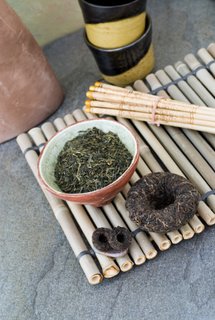 eat well 3. Eat to Feel Good
What we eat can affect our brain chemistry and our mood. To combat SAD, Emmons recommends focusing on foods that increase and stabilize levels of serotonin, a mood-improving hormone that tends to decrease in the winter. These foods include choices rich in tryptophan, a building block of serotonin.
We often crave high-carbohydrate comfort foods in winter, but it’s wise to resist the urge, he says. As he explains it, indulging in refined carbs, such as white bread and white rice, may indeed offer an initial feel-good spike in serotonin levels. But, as with a sugar rush, refined carbs end up depleting our serotonin levels soon after.
Instead, eat a variety of complex carbohydrates, such as barley, brown rice, oats, and other whole grains, and include a small amount of lean protein, ideally a high-tryptophan protein (turkey, cheese, eggs) at each meal or snack. Also include leafy green vegetables, such as kale and bok choy, which provide mood-supporting B vitamins and minerals that help convert tryptophan into serotonin.
4. Move and Stretch
“Exercise helps [all types of depression] for many reasons,” says Emmons. It boosts serotonin levels in the brain; it improves circulation, which gets more blood and nutrients to the brain; it increases energy and metabolism, even at the cellular level; and it improves glucose regulation, which also affects energy levels.
For those taking antidepressant medication, exercise helps improve the effectiveness of the drug, likely by improving circulation. More of the medicine gets to the brain, where it’s needed, and the body metabolizes the drug more easily, which reduces side effects.
The best news about SAD and exercise, says Emmons, is that you don’t have to take your workout to the extreme. Mild aerobic exercise for 30 minutes can usually lighten your mood. If it’s not too cold, walking outdoors is a great option. At the gym, try the stationary bike or treadmill for a half-hour every day.
5. Supplement Smartly
Several dietary supplements can help fill in any nutritional gaps and in turn may lift your mood. Emmons says his clients have had success with the following four:
Vitamin D
Deficiency in this vitamin is extremely common and may contribute to both ordinary and seasonal depression (along with other illnesses). While light boxes substitute for the sun in certain ways, they don’t provide this critical nutrient (which is more of a hormone than a vitamin). In the winter, a vitamin D supplement can help regulate your mood.
Dosage: 2,000 IU of vitamin D3 daily
Multivitamin
A good one includes plenty of B vitamins, as well as key minerals such as selenium (which helps support mood) and magnesium (which reduces anxiety and muscle tension).
Dosage: 1 daily
B-Vitamin Complex
These assist the brain in producing neurotransmitters such as serotonin and norepinephrine.
Dosage: One B-50 supplement daily (along with the multivitamin)
Omega-3-Rich Fish Oil
Studies suggest that omega-3 fatty acids may help prevent and ease depression and other mood disorders. Flax makes a good substitute for strict vegetarians.
Dosage: 1,000 mg of fish oil in capsule form twice daily, or 1 tablespoon of flax oil twice a day
6. Take It Outside
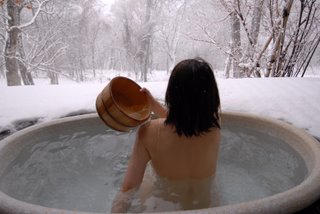 go outside to cheer up Spending time outdoors helps us reconnect with nature, says Emmons, thus healing a rift that seems to lie at the heart of seasonal depression. If you combine a serotonin-boosting exercise with your outdoor time — like a brisk walk at a local park or an afternoon of cross-country skiing — you’re combating the winter blues on two fronts.
During the summer, take advantage of the sunlight by spending 15 to 20 minutes a day in the sun without sunscreen (unless you’re at risk of skin cancer). This will help build your vitamin D levels for next year.
7. Try Healing Herbs
Certain medicinal plants ease the winter blues, says Margi Flint, who runs the Earthson Herbals school in Marblehead, Massachusetts.
Uplifting Tea
For a mild, mood-boosting infusion, simmer 1 ounce oatstraw in 1 quart of water for 40 to 60 minutes. Remove from heat, add 2 tablespoons of dried chamomile and 2 tablespoons of dried lemon balm; cover and steep for 15 minutes. Strain and drink several cups daily.
Aromatherapy
Since the smell of any citrus uplifts the spirit, add a total of 10 drops of any combination of lemon, lime, and orange essential oils to each ounce of lotion or massage oil. Use daily, or use these oils in a diffuser.
Daily Tonic
Holy basil, ashwaganda, and gotu dola — from India’s traditional system of medicine, Ayurveda — help ease depression. Flint suggests using the powdered form; add a 1/4 teaspoon of each to oatmeal or applesauce.
8. Don’t Go It Alone
As with any form of depression, working with a mental-health professional for SAD can be beneficial. If you experience suicidal thoughts or other serious symptoms, seek help immediately.
One of the ultimate Zen like experiences is waking-up from a great slumber refreshed and energized. Your mind and body are harmoniously one, both alert and focused. Having a refreshed mind and body are two keys to a natural and Zen lifestyle. Waking up in the morning should not be a loud and abrupt awakening, but rather it should be a peaceful positive experience. The right natural alarm clock can transition your deep and tranquil sleep into a serene start to consciousness. Imagine a long-resonating Tibetan bell-like chime waking you up to a beautiful morning experience.
The right alarm clock can be the most beneficial investment for you. With our Now & Zen natural alarm clock you are awakened more gradually and thus more naturally. Now & Zen is focused on creating a naturalistic lifestyle, and our clocks are an example of our philosophy.
adapted from Body + Soul, January/February 2009
 Bamboo Alarm Clocks & Meditation Timers
Now & Zen – Gradual Chime Alarm Clock Store
1638 Pearl Street
Boulder, CO 80302
(800) 779-6383
Posted in Goodness, Insomnia, intention, sleep, Sleep Habits, Well-being, Zen Timers
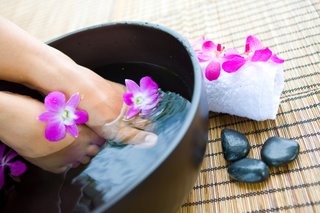 feet in foot spa bowl with orchids After a busy week, why not treat yourself like a flower in need of some care and pampering?In the healing tradition of Ayurveda, we’ve have created a rejuvenating summer routine that you can do at home on a weekend — one that consists of such indulgent pleasures as soothing masks, herbal baths, calming yoga poses, and seasonal meals. Come Monday morning, no matter what, you’ll emerge feeling refreshed, collected, and looking your best.
Morning Yoga
Greet the day with a gentle yoga routine. Poses such as Bow Pose, Downward Dog, and spinal twists help balance pitta.
Breakfast
For the first meal on each of these two days, eat a large bowl of fruit salad with a tall glass of freshly squeezed orange juice. This meal will help your body get rid of accumulated toxins. If you find orange juice too acidic, you may substitute pitta herbal tea (available at Indian grocery stores) or any other fresh fruit juice of the season. You may also prepare a blended fruit smoothie in place of the fruit salad. In a blender, combine a large banana with 1/2 cup of your choice of seasonal fresh fruits and 1/2 cup of water to thin it out.
Spa Treatments
Spend an hour or two luxuriating in the pitta-balancing spa treatments. On Saturday, you’ll focus on your skin and body; on Sunday, you’ll treat the hair, hands, and feet.
Down Time
Spend the late part of the morning as you like — reading an interesting book, listening to music, writing in your journal, gardening, painting. The choices are endless. It is important, though, to spend time unwinding and doing what you want rather than what you think you should do.
Lunch
After your morning yoga and spa therapies, enjoy a large raw salad made with fresh seasonal green vegetables such as cucumber, celery, and sprouts. Choose pitta-balancing herbs and spices like cilantro and basil to add flavor. Eat your lunch slowly and mindfully, focusing on the flavors and textures of the ingredients. To unlock your mind, reflect on the view from your window, or even the sight of indoor plants and flowers, while you eat.
 - treat yourself to some rest
Rest
Exercise
Your retreat will be enhanced by a brisk walk, preferably in the open air so you can breathe fresh oxygen directly into your lungs. Stay conscious of good posture, and warm up by starting out at a slow pace then building to a brisk pace. Keep your chest out, swing your arms wide, and breathe through your mouth. Walk for 20 to 30 minutes. If you prefer, swimming is also a good exercise for balancing pitta.
Digestive Meditation and Care
This is an ideal time to tune in to and become familiar with your digestive system. Place your hands first on your stomach and become aware of any slight movements, feelings, or sounds. Do the same with your small intestines in your midriff area and then with the area under your navel. Mentally prepare for your next meal by noticing whether you are hungry or not. Resolve to eat only as much as you need to fill three-quarters of your stomach (this typically translates to about as much food as will fit into both your cupped hands). Using a little bit of oil, massage your stomach in round circles, moving clockwise. This will help you digest the last meal and prepare your body for the next.
Dinner
Dinner during the retreat should consist of steamed vegetables. As with lunch, use fresh, green seasonal vegetables — the greener the better. For extra flavor, add fresh herbs such as rosemary, basil, parsley, and sage, or pine nuts, sesame seeds, or pumpkin seeds. As with lunch, eat slowly and mindfully, which will allow for complete digestion. An hour or so after dinner, enjoy an herbal tea.
 Bath and Bedtime Bath and Bedtime
Run a bath prepared with ingredients to balance pitta — rose, neem, jasmine, basil. You may use fresh or dried leaves and herbs; bundle a handful of ingredients in a piece of muslin cloth to make a tea bag for your tub. Or, if you prefer, add a few drops of essential oils directly to the bathwater. If you like, use candles, fresh flowers, and music to aid relaxation. As you soak in the bath, close your eyes and breathe deeply, releasing tension with each exhalation. Keep yourself warm after the bath and go to bed, relaxed and at peace.Rest is important to calm the mind and allow the physical body to deal with fatigue. After eating, take some quiet time to listen to music, read, or take a short nap for half an hour to an hour if you are sleepy. If you are tired but cannot fall asleep, then simply rest your mind and body by lying down and emptying your mind of thoughts.
One of the ultimate Zen like experiences is waking-up from a great slumber refreshed and energized. Your mind and body are harmoniously one, both alert and focused. Having a refreshed mind and body are two keys to a natural and Zen lifestyle. Waking up in the morning should not be a loud and abrupt awakening, but rather it should be a peaceful positive experience. The right natural alarm clock can transition your deep and tranquil sleep into a serene start to consciousness. Imagine a long-resonating Tibetan bell-like chime waking you up to a beautiful morning experience.
The right alarm clock can be the most beneficial investment for you. With our Now & Zen natural alarm clock you are awakened more gradually and thus more naturally. Now & Zen is focused on creating a naturalistic lifestyle, and our clocks are an example of our philosophy.
adapted from Body + Soul, June 2005
Now & Zen – The Zen Alarm Clock Store
1638 Pearl Street
Boulder, CO 80302
(800) 779-6383
 Now & Zen's Family of Products
Posted in intention
 Use Your Soothing Chime Alarm Clock - Kiyonaga Torii, Beauties in September Whenever my husband tells one of his legendary bedtime stories, it’s as if our entire world slows to a crawl. It doesn’t matter if the plot hangs on the genius of Detective Victor Garcia and his whip-smart daughter Inez — or the pranks of Captain Giggles, who’s inclined to put Jell-O in people’s rain boots when they least expect it. The minute Chris settles into his chair, gathering that first sentence in his imagination, our three girls hold their collective breath. The house falls silent.
What makes these moments so enchanting isn’t just his storytelling mastery. It’s also the timelessness it evokes. Lost in the spell of the latest adventure, his enraptured audience wants nothing more than for the tale to unravel slowly. If they had their wish, it would go on for hours.
My kids, like all kids, have that famously easy way of getting lost in a moment. The truth about these stories, though, is that our everyday life too often crowds them out — the mountains of laundry, the getting to work on time, the broken dryer, the doctor’s appointments. Despite wanting to wallow in stretches of downtime, I often feel as if chaos lurks just around the corner — and I know I’m not alone. Coworkers, neighbors, friends, the woman at the checkout counter, the post-office guy, my yoga teacher — they all knowingly roll their eyes these days at the mere mention of “busy.” It seems we’re all aching for more breathing room. Somehow, though, despite our best intentions, we can’t seem to find it.
The idea of a national time crunch isn’t new, of course. The public hand-wringing actually began decades ago, as researchers revealed the serious health consequences of the then-novel “24/7 lifestyle.” But since then, the problem has reached epidemic proportions. “Every woman I talk to these days tells me she’s exhausted,” says Kathleen Hall, founder of The Stress Institute in Clarkesville, Georgia, and author of “A Life in Balance and Alter Your Life.” But it’s not only our health that suffers — it’s our happiness, too. Living on overdrive squeezes out the breathing room we need to appreciate any given moment. As we rush through life, it passes us by.
The effect can feel a bit like being swept into white-water rapids. “But we’re not as helpless as we think,” says Cecile Andrews, author of “Slow Is Beautiful: New Visions of Community, Leisure, and Joie de Vivre” and an active member of Take Back Your Time, a group heading a national effort to address America’s time famine. As she and other experts explain it, finding more time isn’t about getting skilled at cramming everything in. Instead, it involves looking at the problem — and also ourselves — with a fresh perspective. By identifying what truly makes us happy and recognizing how our choices affect our lives, we can keep the big picture of our life path in full view. Then, says Andrews, “we can all take a breath and begin to slow down.”
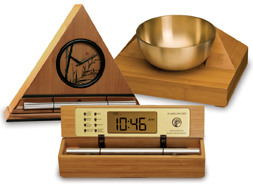 Chime Alarm Clocks and Timers for Meditation & Yoga One of the ultimate Zen like experiences is waking-up from a great slumber refreshed and energized. Your mind and body are harmoniously one, both alert and focused. Having a refreshed mind and body are two keys to a natural and Zen lifestyle. Waking up in the morning should not be a loud and abrupt awakening, but rather it should be a peaceful positive experience. The right natural alarm clock can transition your deep and tranquil sleep into a serene start to consciousness. Imagine a long-resonating Tibetan bell-like chime waking you up to a beautiful morning experience.
The right alarm clock can be the most beneficial investment for you. With our Now & Zen natural alarm clock you are awakened more gradually and thus more naturally. Now & Zen is focused on creating a naturalistic lifestyle, and our clocks are an example of our philosophy.
adapted from Body + Soul, October 2006 by Jennifer Barrett
 Gradual, Soothing Chime Alarm Clocks - Boulder, Colorado Now & Zen’s Gradual and Soothing Chime Alarm Clock Store
1638 Pearl Street
Boulder, CO 80302
(800) 779-6383
Posted in intention
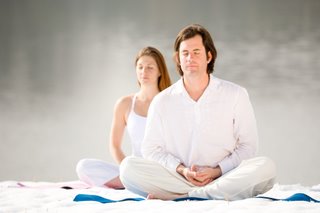 How to feel more compassionate Maitryadisu balani
The cultivation of friendliness creates inner strength. (Yoga Sutra III.24)
We typically think of our emotional range as something that is fixed and unchanging—a reflection of the personality we’re born with. But research is revealing the possibility that we may be able to cultivate and increase our ability to feel the emotional state of compassion. Researchers have found that feeling connected to others is as learnable as any other skill. “We are trying to provide evidence that meditation can cultivate compassion, and that you can see the change in both the person’s behavior and the function of the brain,” Lutz says.
So what does compassion look like in the brain? To find out, Lutz and his colleagues compared two groups of -meditators—one group whose members were experienced in compassion meditation, and the other a group whose members were not—and gave them the same instructions: to generate a state of love and compassion by thinking about someone they care about, extend those feelings to others, and finally, to feel love and compassion without any specific object. As each of the participants meditated in-side the fMRI brain scanners, they were occasionally interrupted by spontaneous and unexpected human sounds—such as a baby cooing or a woman screaming—that might elicit feelings of care or concern.
All of the meditators showed emotional responses to the sounds. But the more experienced compassion meditators showed a larger brain response in areas important for processing physical sensations and for emotional responding, particularly to sounds of distress. The researchers also observed an increase in heart rate that corresponded to the brain changes. These findings suggest that the meditators were having a genuine empathic response and that the experienced meditators felt greater compassion. In other words, compassion meditation appears to make the brain more naturally open to a connection with others.
These meditation techniques may have benefits beyond the experience of spontaneous compassion. A study by psychology professor Barbara Fredrickson and her colleagues at the University of North Carolina, Chapel Hill, and the University of Michigan, found that a seven-week lovingkindness meditation course also increased the participants’ daily experience of joy, gratitude, and hope. The more participants meditated, the better they felt. Participants also reported a greater sense of self-acceptance, social support, purpose in life, and life satisfaction, while experiencing fewer symptoms of illness and depression. This study provides strong evidence that chipping away at the illusion of separation can open us up to a far more meaningful connection to life.
adapted from Yoga Journal, by Kelly McGonigal
Use our unique “Zen Clock” which functions as a Yoga & Meditation Timer. It features a long-resonating acoustic chime that brings your meditation or yoga session to a gradual close, preserving the environment of stillness while also acting as an effective time signal. Our Yoga Timer & Clock can be programmed to chime at the end of the meditation or yoga session or periodically throughout the session as a kind of sonic yantra. The beauty and functionality of the Zen Clock/Timer makes it a meditation tool that can actually help you “make time” for meditation in your life. Bring yourself back to balance.
 Zen Timers and Gentle Alarm Clocks Now & Zen – The Chime Timer Store
1638 Pearl Street
Boulder, CO 80302
(800) 779-6383
Posted in Chime Alarm Clocks, intention, Meditation Timers, Meditation Tools, mindfulness practice, Now & Zen Alarm Clocks, Well-being, zen, Zen Timers
 set your zen timer for a mini-meditation Memorize a three-to-five-word phrase, a mantra, that will bring you back to center when things get rough, such as “I am strong” or “Spirit will guide me.” Also, keep a peaceful image mentally on hand (a beach scene, a quiet forest) to call up in stressful moments. Set your Digital Meditation Timer with Chime for 5 minutes and sit silently repeating your phrase until the calming chime sounds.
adapted from Body + Soul Magazine
 digital timers for meditation and yoga with chime Now & Zen – The Meditation Timer Store
1638 Pearl Street
Boulder, CO 80302
(800) 779-6383
Posted in Chime Alarm Clocks, intention, Meditation Timers, Meditation Tools, mindfulness practice, Well-being, Zen Timers
 time for a rest Cold, dark, stormy winter is the season that makes us glad to live in buildings. This is the time when we want a lot less contact with the world outside our walls—and when the impact of whatever is inside our homes is intensified.
Winter is the season for slowing down, going within, resting, and reflecting; we tend to sleep longer, eat more, be less active, and feel more emotionally sensitive. As we move inward, we aren’t turning our back on the rest of life; we’re doing essentially the same things that the other animals and plants in our hemisphere are doing. When we don’t join them, we deprive ourselves of an important restorative experience.
Satisfy your soul
Winter is a good time to tune in to yourself. There’s no need to keep up the high energy levels of summer. It’s time to curl up on the couch under a lap robe with a mug of herbal tea and reflect on your life. It’s an especially good time to look around and notice whether your home nurtures you, renews you, and provides a safe place where you can hear the still, small voice within.
 Winter is a good time to tune in to yourself What do you long to come home to? If you work at a high-pressure job, you may need your home to be soft and peaceful. If your day is spent tending to the needs of others, you may want a corner where you can shut out the world. If much of your day is spent in solo pursuits, you may want your home to be a place for gathering with friends or family. If you have small children, it may seem especially difficult to carve out space and time for yourself—but no one needs it more than parents, and small gestures of self-love can go a long way.
When arranging their interior spaces, people often focus on the more public areas (entry, living room, dining room) and neglect their more private rooms (bedroom, study, bathroom). If your home is to be your place of renewal, your oasis in a crazy world, give to yourself! Think about what elements make you feel most at home: art objects, relaxing colors, sensuous fabrics, warm lighting, good music? Do you have at least one area where you can make the world go away and wrap yourself in love? What really helps you let go of tension? An overstuffed chair by a window where you can read a book and watch the storms rage outside? A steaming aromatherapy bath by candlelight? A homey dining table with warm, intimate lighting where you can share the day’s stories with your family? A sacred place for meditation? Filling the house with the smell of baking bread?
And how is your bedroom? Does it help you drift off to sleep relaxed and content, or is it decked out with piles of laundry, exercise equipment, and unpaid bills? The time you spend clearing up clutter and making your bedroom peaceful will pay you back in serenity and rejuvenating rest. How you wake up is important, too. What are the first things you see when you open your eyes in the morning? Do they help you feel good inside?
Transcend the fear of selfishness
The point of all this self-nurturing is not to isolate you in a bubble of indulgence. Quite the opposite; the point is to restore and maintain your vitality. Because all of life is interconnected, this is the basis of caring for all life. Furthermore, the better we understand our own organism’s needs, the more deeply we grasp the nature of life itself. The more depleted we are, the harder it is to care for other things—and a lot of us are pretty depleted. If we care about the earth and the life on it, we must include ourselves. It makes no sense to “save the planet” while abusing our own vitality with excessive busyness, sleep deprivation, and overwork. Somehow we bought the idea that it’s selfish to take care of ourselves, and that crazy notion has estranged us from the very pulse of life. Exuberant love of life is the most powerful place to come from, and that state arises naturally when we take good care of the life we have—not in ignorance of the rest of life, but in harmony with it.
adapted from Natural Home Magazine, November/December 2002 by Carol Venolia
One of the ultimate Zen like experiences is waking-up from a great slumber refreshed and energized. Your mind and body are harmoniously one, both alert and focused. Having a refreshed mind and body are two keys to a natural and Zen lifestyle. Waking up in the morning should not be a loud and abrupt awakening, but rather it should be a peaceful positive experience. The right natural alarm clock can transition your deep and tranquil sleep into a serene start to consciousness. Imagine a long-resonating Tibetan bell-like chime waking you up to a beautiful morning experience.
The right alarm clock can be the most beneficial investment for you. With our Now & Zen natural alarm clock you are awakened more gradually and thus more naturally. Now & Zen is focused on creating a naturalistic lifestyle, and our clocks are an example of our philosophy.
 Chime Alarm Clock, a meditatin timer for those times you can sit and be mindful Now & Zen – Chime Alarm Clock for a Progressive Awakening
1638 Pearl Street
Boulder, CO 80302
(800 779-6383
Posted in mindfulness practice, Well-being
 enjoy a tranquil cup of tea Tea, a beverage derived from the plant Camellia sinensis, represents a sense of ceremony, history, and tranquility to people around the world. The practice of making a good cup of tea and learning about tea’s history are gaining popularity in the United States as people recognize both the physical and mental benefits of incorporating the art of tea into their daily lives.
Historically reserved for society’s upper echelon and closely connected to religious practices, tea ceremonies have been adopted by many cultures and adapted to fit various lifestyles. Today tea is the world’s most popular beverage next to water. And although schools of thought differ on the art of tea, most agree that, at the root, a good cup of tea begins with the leaf, a deep breath, and a few moments of quiet.
“The entire event of brewing and drinking [tea] can have a beneficial effect on your health and mental well-being,” says Jane Pettigrew, author of several books on the art of tea, including The Tea Companion: A Connoisseur’s Guide (Macmillan, 1997). “Tea calms and focuses you.”
The quiet elegance of the tea ceremony—both the ritualistic and formal Japanese tea ceremony and the more social Chinese version—speaks for itself. The simplicity of the ceremony, whether performed in a traditional teahouse or at home, imparts a unique sense of serenity while it opens a door to another time and culture. A growing number of people who appreciate the history and grace that tea brings to their lives have created tea rituals of their own. “Everyone develops his or her own tradition,” says Stephanie Klausner, owner of Red Crane Teas in Denver. “Ceremony is what you make it.”
 the art of tea In general, tea ceremonies provide an opportunity for the body and mind to focus on one task and release other elements of the day. “It’s a mindful process that brings us back to ourselves,” says tea instructor Donna Roberts Fellman, manager of the TeaCup in Seattle. “It’s a way to create a sacred space in our lives, to take time to stop and be mindful of the process of making a cup of tea.”
Brewing a cup of tea
There are three basic tea categories: black, green, and oolong. They’re all made from the same plant but processed differently. Black tea has been fermented (oxidized) and has a dark color and hearty flavor. Green tea skips the oxidizing and is instead steamed and parched; the flavor is more delicate, and it is light green/golden in color. Oolong, popular in China, is semi-fermented and is a cross between black and green in color and taste. Herbal teas contain no “true” tea leaves but are created from flowers, berries, peels, seeds, roots, and leaves of many different plants.
The thousands of teas available range in price from $4 to $3,000 per pound. Yet even a tea that costs $100 per pound is only fifty cents per cup, making it one of life’s more affordable luxuries. “Nobody ever thinks they like tea until they have a good cup,” says Klausner.
Steeping a pot of tea is a contemplative process that begins with the selection of tea leaves, extends to the preparation of water, and culminates in the experience of holding a warm cup, inhaling the tea aroma, and savoring the tea’s flavor. True tea drinkers discuss the process of making tea with a sense of awe; it is an art form that has been passed from one generation to the next and used as a venue for preserving family traditions. Tea aficionados pay close attention to this art of preparation, which results in a superior cup of tea and provides the mind with a respite from the day’s emotional clutter.
Although a good cup of tea requires a mere ten to fifteen minutes to make, creating that time for pause and reflection represents more than an investment in tea. “It’s a comforting indulgence, a delicacy that’s good for your head and your body,” Klausner says. “It’s what I do for myself.”
adapted from Natural Home Magazine, September/October 2002 by Heather Grimshaw
“The Zen Alarm Clock & Chime Timer‘, uses soothing acoustic chimes that signal it’s time – gently and gradually.
Rather than an artificial recorded sound played through a speaker, the Zen Clock features an alloy chime bar similar to a wind chime. When the clock’s alarm is triggered, its chime produces a long-resonating, beautiful acoustic tone reminiscent of a temple gong.
 Bamboo Digital Chime Clock, a Tea Timer Now & Zen – The Zen Timer and Alarm Clock Store
1638 Pearl Street
Boulder, CO 80302
(800) 779-6383
Posted in Tea Ceremony, Zen Timers
 tips for staying healthy this holiday season As the chill of winter arrives, so does the prospect of congestion and coughing, sore throats and sniffles, and other less-than-desirable symptoms.
But you might have noticed that colds, flus, and other seasonal blights seem to hit some people again and again, while others coast through to spring unscathed. Is this punishment random, like a tornado, or is there a method to the cold-and-flu madness?
There is indeed a method. While we can all help prevent viral and bacterial infections by washing hands regularly and avoiding germ-laden surfaces, it’s not just the bugs we encounter that determine how healthy we are. Our well-being also depends on how prepared our bodies are to fight them.
An entire field of research called psychoneuroimmunology has bloomed in recent years. It aims to uncover the links between the brain, behavior, and the immune system. One of its primary targets is the universal phenomenon known as stress.
We’ve all experienced the nasty cold that comes after a deadline, and scientific evidence has borne out this pattern, with clinical studies showing that psychological stress can weaken defenses and slow recovery from illnesses small and large. A recent study from the University of California, Los Angeles, in fact, found that the effects of stress play out at the cellular level: Hormones cued by emotional stress make immune cells age faster.
What is stress? “It’s our body’s response to something that taxes or exceeds our resources, whether from external pressures or our own internal worries,” says Frances Cohen, a psychologist at the University of California, San Francisco. What feels stressful depends on a person’s reaction to a given circumstance. “For some people, getting divorced is a positive step,” she says. “But for others, it’s devastating.” When we perceive something as harmful, our brain triggers hormones such as cortisol, which can affect the immune system. “You can trace it from the brain through the body,” Cohen says.
After stress hormones pour into the bloodstream, “the body tries to correct itself, to bring itself back into homeostasis,” she adds. So if the stress is brief, the hormones dissipate, and the body returns to normal. In one study, her group found that people who lost their jobs had lower levels of an important class of immune cell. However, she says, “we saw a recovery of immune levels, a bouncing back, in people who got a new job.”
 reduce stress Stress that lasts over a long period of time proves far more damaging to our bodies than short-term stress. A study published earlier this year, for instance, found that consistently high levels of perceived stress could reduce women’s ability to fight an infection from human papilloma virus (HPV), which can cause cervical cancer; no such effect occurred with one-time stressful events such as job loss.
And in a preliminary study published in August, researchers studied people caring for family members with chronic illnesses (a long-term stressor); compared with a control group, the caregivers’ white blood cells were less responsive to cortisol and more responsive to a pro-inflammatory compound — leaving their bodies in a state of chronic inflammation.
Exercise and Sleep
Immunity isn’t all in your head, of course; day-to-day physical habits matter a great deal. Exercise, sleep, and nutrition in particular have strong links to immunity — and, not coincidentally, to our mental well-being.
Start with fitness: Those who exercise regularly, says Monika Fleshner, Ph.D., a professor of integrative physiology at the University of Colorado at Boulder, acquire a resiliency that makes them less susceptible to health problems. “This is especially important when we’re stressed and as we age,” says Fleshner.
Interestingly, more exercise isn’t necessarily better. “While too little exercise is bad for the immune system, too much is just as bad,” she notes. Athletes who exercise strenuously may have higher rates of respiratory infections. Just the right amount of movement helps maintain a healthy weight, which in turn plays a role in how well we battle colds and flus: People who are obese have diminished immune responses and more severe infections.
The fact that many Americans don’t get enough sleep and rest spells bad news for our immune systems, too, says Motivala, increasing the risk of conditions ranging from frequent colds to diabetes. “A normal sleep cycle is vitally important for immune function,” he explains, since immune cells circulate throughout the body according to cycles of sleep and wakefulness. Their levels in the blood peak around midnight, then gradually return to lymph nodes as we sleep. A lack of sleep interrupts this process, lowering levels of “natural killer” cells, important first-line defenders against infections.
 prioritize shut-eye
Prioritize Shut-Eye
Evidence shows that sleep has wide-ranging effects on immunity. Most of us need about eight hours a night, but quality matters just as much. “Keep track of how you feel in the morning,” says Sarosh Motivala. A little grogginess is fine, but you shouldn’t be dragging. “If you’re waking up tired, it doesn’t matter if you had eight hours or five hours, something is not right,” he says. Sleep problems can arise from a number of sources, including stress, a poor diet, or a sedentary lifestyle, so talk to your doctor or alternative health therapist to identify the cause in each case. Be sure to treat yourself gently in the morning by waking progressively over a 10 minutes period of time with The Zen Alarm Clock with Chime.
One of the ultimate Zen like experiences is waking-up from a great slumber refreshed and energized. Your mind and body are harmoniously one, both alert and focused. Having a refreshed mind and body are two keys to a natural and Zen lifestyle. Waking up in the morning should not be a loud and abrupt awakening, but rather it should be a peaceful positive experience. The right natural alarm clock can transition your deep and tranquil sleep into a serene start to consciousness. Imagine a long-resonating Tibetan bell-like chime waking you up to a beautiful morning experience.
The right alarm clock can be the most beneficial investment for you. With our Now & Zen natural alarm clock you are awakened more gradually and thus more naturally. Now & Zen is focused on creating a naturalistic lifestyle, and our clocks are an example of our philosophy.
adapted from Body + Soul, November 2008
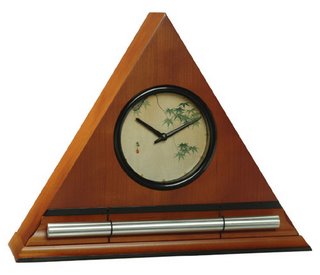 chime alarm clocks and natural sounding timers for a gentle wake up
Now & Zen – The Soothing Chime Alarm Clock Store
1638 Pearl Street
Boulder, CO 80302
(800) 779-6383
Posted in sleep, Sleep Habits, Well-being
« Previous Entries
Next Page »
|
|
|
|